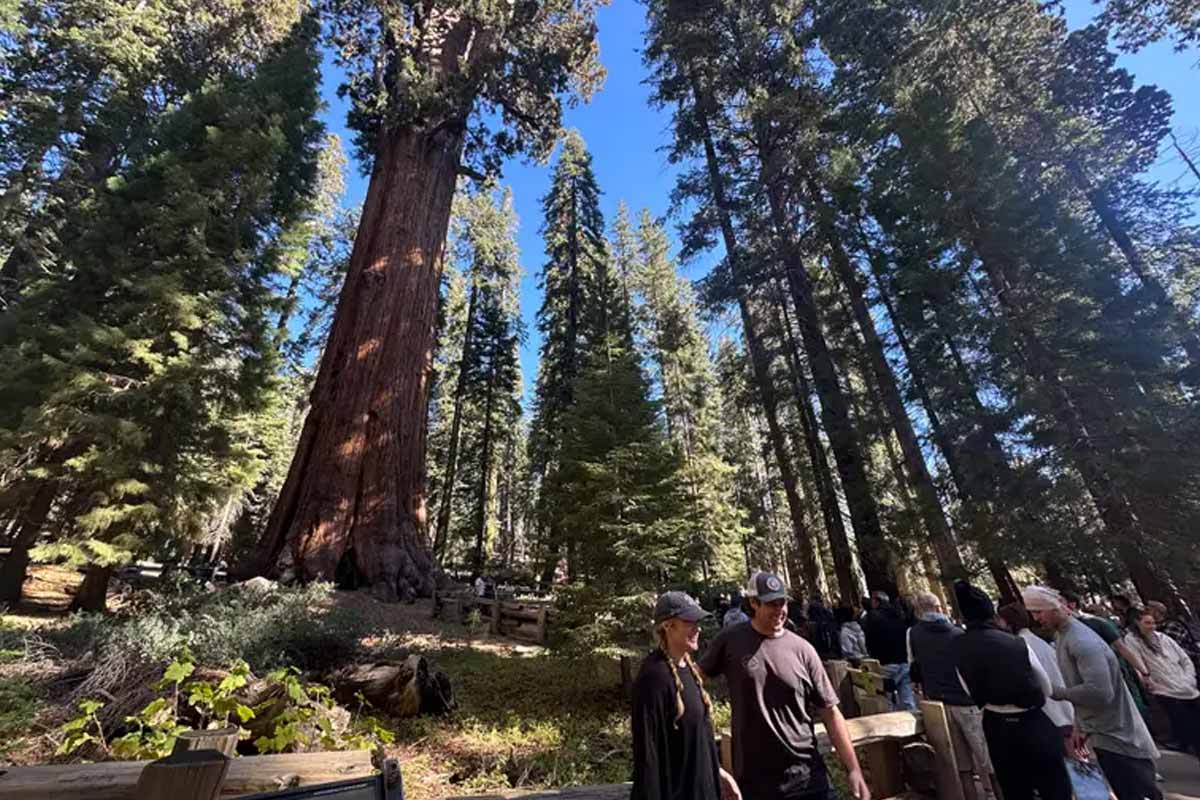The shutdown didn’t empty the trails or mute the giant trees; it reshaped the rhythm of a visit. I headed into Sequoia and Kings Canyon, where limited crews changed small routines while the scenery stayed jaw-dropping. Visitor centers were dark, however bathrooms and concessionaire sites kept humming. Planning mattered more than ever, because some help points were closed and cell coverage vanished. I leaned on downloads, simple backup gear, and patience. The result still felt rich, since parks remain resilient when visitors come prepared.
What the shutdown changed on the ground
Two neighboring preserves sit in California’s Sierra Nevada, a 4.5-hour drive from Los Angeles. They’re separate units, yet their roads, trailheads, and sights interlock. I arrived more than two weeks after the October 1 shutdown began and found gates open, signs posted, and routines slightly altered across both parks while crowds kept streaming in.
The National Park Service promised access “as possible” during the lapse in appropriations, and that matched what I saw. Crews were smaller, so expectations needed resets. Bathrooms functioned, trash got handled, and popular paths stayed open, though some amenities paused. The scene felt normal at first glance, yet small cues hinted at reduced staffing.
Signs replaced rangers at entry plazas, where maps and fee booths usually mark the start. Printed notices explained that some services might not be available. People photographed the boards, compared plans, and moved on. The landscape still delivered: giant sequoias, granite domes, and crisp autumn air that felt generous despite the constraints.
Planning smarter for parks with fewer services
Cell service drops to near zero inside these mountains, so I treated preparation as safety gear. I downloaded Google Maps for the entire region, the official NPS map set, and trail routes in AllTrails. That redundancy eased navigation, because wayfinding depends on your phone’s preloaded data when networks fade.
Weather can flip fast, yet the park website still updated zone forecasts in real time. Those pages proved invaluable, since I could plan layers, start times, and driving windows with confidence. The Lodgepole area forecast matched trail conditions, and that accuracy paid off while choosing paths and judging daylight for return times.
Uncertainty lingered around campground status, so I booked ahead through Recreation.gov, which kept operating. A site opened at Sentinel Campground just a day before arrival. That small win simplified everything, because a confirmed base lets you adjust calmly. Preparation reduced surprises and freed attention for scenery, not logistics tied to reduced services.
What stayed open, and how to use it
Even with NPS buildings closed, many essentials worked. Bathrooms across busy hubs were open and maintained, which matters on long trail days. At Grant Grove, the market, gift shop, and a restaurant welcomed visitors. Over in Lodgepole, the market, restaurant, showers, and a laundromat stayed available, anchoring needs beyond sightseeing in the parks.
Trails to marquee sights were accessible. I walked among titans to General Sherman and General Grant and climbed the steps of Moro Rock. Foot traffic flowed, yet the grove quiets you. The paths were in good shape, and the mix of families, hikers, and photographers felt typical for the season’s cool, bright light.
Campgrounds varied by area, but Sentinel’s bathrooms were stocked and clean, with potable water available. That reliability boosted comfort and safety. If you plan your route and timing, the on-site services cover basics while you handle everything else. It’s a balanced trade: fewer official touchpoints, more self-reliance, yet an easy rhythm once settled.
Costs, closures, and rules across these parks
Normally, a single $35 per-vehicle fee covers entry to both units, and 80% of those dollars fund facilities and improvements. During my visit, booths were unstaffed and fees weren’t collected. Notices at the gates replaced the usual welcome, and the shift felt odd, since paying directly supports maintenance visitors rely on during busy months.
Visitor centers stayed closed. People peered through glass at big maps, trying to memorize routes. One traveler laughed that maps were “in view, yet off-limits.” Passport stamp hunters went away empty-handed. The closures underscored how much rangers help with tailored advice, from fitness-matched hike picks to real-time trail condition tips that shape safer choices.
Rule-breaking didn’t vanish. I saw off-trail shortcuts and dogs on restricted paths, behaviors that damage fragile soil and stress wildlife. Staffing cuts make enforcement harder, so personal responsibility matters. Clear signage still marked pet limits and trail etiquette. When everyone honors those basics, crowds move smoothly and the resource stays intact for the next wave.
Safety, stewardship, and when to postpone a trip
Reduced services raise the bar for visitor care. I packed extra toilet paper, a water reserve, and backup layers, because small items solve big headaches. Simple steps, like checking trailhead boards, respecting closures, and yielding right of way, keep days smooth. The Leave No Trace framework ties those habits together inside these celebrated parks.
Advocates at the National Park Conservation Association have urged closures during shutdowns to protect resources and people. In 2019, vandalism, trash, and human waste forced Sequoia and Kings Canyon to close temporarily, according to NPCA. That history explains caution. When staffing dips, risks rise, and visitor choices carry more weight on sensitive landscapes.
NPCA notes that more than 60% of staff face furlough in these periods, while some sites stay open and others close. That uneven reality makes research essential before setting out. Recreation.gov helped with certainty on campsites, because a booked place trims risk. For newcomers, patience might be wise; full services give confidence while learning the terrain.
Why first-timers may want to wait while veterans lean in
As a frequent visitor and camper, I felt comfortable navigating closed centers, lighter staffing, and self-service. First-timers could benefit from waiting until full operations resume, because ranger guidance adds a safety net. With careful prep, respect for rules, and steady judgment, parks still reward every step, especially when visitors share the work of care.
